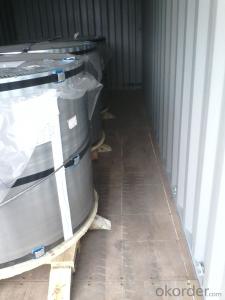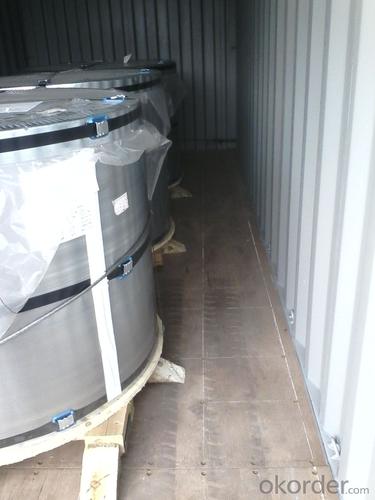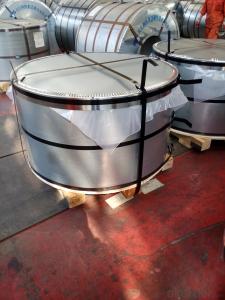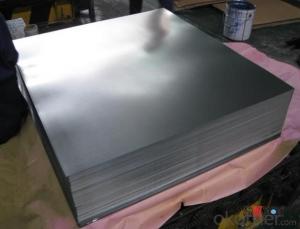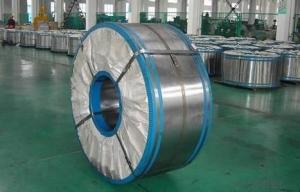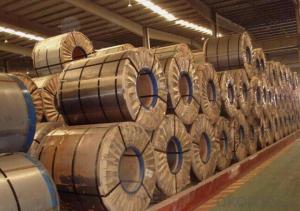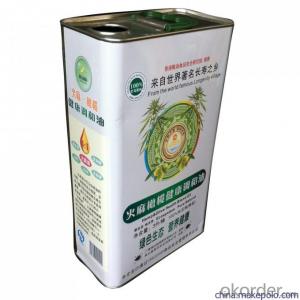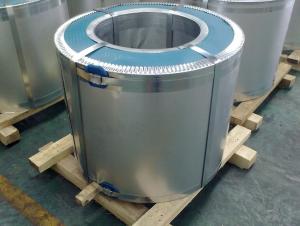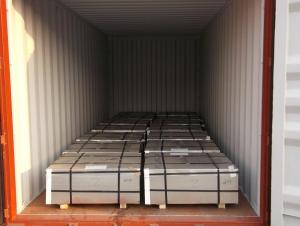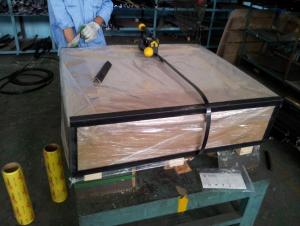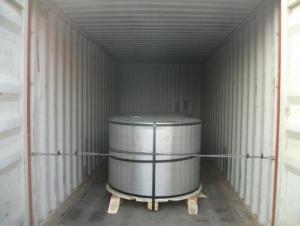Electrolytic Tinplate Sheets for Industrial Paint Package
- Loading Port:
- Qingdao
- Payment Terms:
- TT OR LC
- Min Order Qty:
- 25 m.t.
- Supply Capability:
- 30000 m.t./month
OKorder Service Pledge
OKorder Financial Service
You Might Also Like
1.Structure of Electrolytic Tinplate Sheets for Industrial Paint Package Description
Electrolytic Tinplate is a thin steel sheet coated by tin. It has an extremely beautiful metallic luster as well as excellent properties in corrosion resistance, solder ability, and weld ability.
2.Main Features of the Electrolytic Tinplate Sheets for Industrial Paint Package
Electrolytic Tinplate undoubtedly enjoys the pride of place as a packaging medium especially for food. It owes its unique position to its "nine layer sandwich structure", each of which contributes to its eminence as a packing material. The steel base of electrolytic tinplate provides the necessary strength and formability for can fabrication. The tin-iron alloy layer provides the bond between the steel and free tin layer. The free tin layer is not only responsible for the attractive bright finish and ease of solderability but is also non-toxic- a factor of vital importance in food packaging!
Tinplate is also widely used for making all types of containers such as food cans, beverage cans, and artistic cans, tea cans, painting cans, chemical package cans and dry food package cans, metal printing etc. Its applications are not limited to containers; recently, electrolytic tinplate has also been used for making electrical machinery parts and many other products.
3.Electrolytic Tinplate Sheets for Industrial Paint Package Images


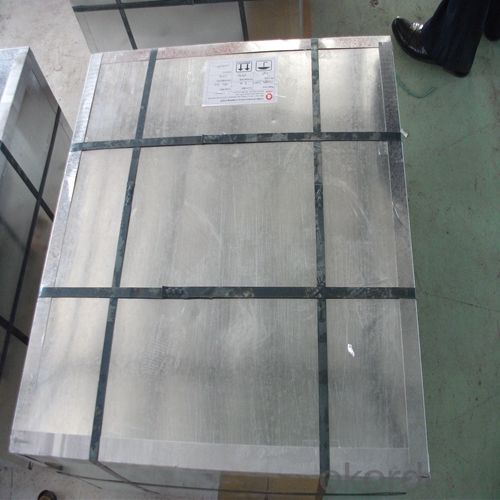
4.Electrolytic Tinplate Sheets for Industrial Paint Package Specification
Standard:BS EN 10202
Material: SPCC
Thickness:0.23mm
Width:732mm
Temper: T4
Annealing: CA
Coil Inner Diameter: 508mm
Weight: 6-10 tons/coil
Passivation:311
Oil: DOS
Surface: silver
5.FAQ of Electrolytic Tinplate Sheets for Industrial Paint Package:
1. What is the delivery time for your prime quality tinplate?
Usually 35 days after order confirmation.
2. What is your Minimum Order Quantity?
Usually MOQ is 50tons for one single size, for trial order, it can be 25 tons.
3. What is the payment term?
The most common we use is L/C at sight or TT. We can also try use other terms.
- Q: Is tinplate safe for food contact?
- Yes, tinplate is safe for food contact. It is commonly used for food packaging as it is non-toxic, resistant to corrosion, and provides an effective barrier against moisture, oxygen, and light.
- Q: How does tinplate affect the overall barrier properties of packaging?
- Tinplate enhances the overall barrier properties of packaging by providing a protective layer that prevents oxygen, moisture, and light from permeating through the packaging material. This helps in preserving the quality, freshness, and shelf-life of the packaged products. Tinplate also adds strength and durability to the packaging, ensuring that it can withstand external pressures and maintain its integrity during transportation and storage.
- Q: How does tinplate packaging contribute to product marketing?
- Tinplate packaging contributes to product marketing in several ways. Firstly, it enhances the visual appeal of the product, making it more attractive to potential customers. The shiny and vibrant nature of tinplate packaging can catch consumers' attention and create a positive first impression. Additionally, tinplate packaging can be customized with high-quality printing, allowing for brand logos, product information, and eye-catching designs to be prominently displayed. This helps build brand recognition and reinforces brand image. Moreover, tinplate packaging provides durability and protection, ensuring that the product remains in good condition during transportation and on store shelves. This reliability can instill trust in consumers and enhance the perceived value of the product. Overall, tinplate packaging plays a crucial role in differentiating products from competitors and influencing purchasing decisions through its visual appeal, branding opportunities, and protective qualities.
- Q: What are the quality control measures for tinplate production?
- Quality control measures for tinplate production typically involve a combination of inspections, tests, and process controls. These measures include visual inspections to check for defects like scratches, dents, or uneven coating, as well as dimensional checks to ensure the tinplate meets specified thickness and width requirements. Additionally, chemical composition analysis is often performed to verify the tinplate's composition and adherence to standards. Coating adhesion and corrosion resistance tests are also conducted to ensure the tinplate's durability. Overall, quality control measures aim to ensure that tinplate production meets the desired quality standards and customer requirements.
- Q: What are the common decorative options for tinplate packaging?
- Some common decorative options for tinplate packaging include embossing, lithography, and varnishing. Embossing adds texture and depth to the design, while lithography allows for detailed and vibrant images to be printed on the tinplate. Varnishing provides a glossy finish and enhances the overall aesthetic appeal of the packaging.
- Q: What are the different types of tinplate seams?
- There are three main types of tinplate seams: the lap seam, the double seam, and the triple seam. The lap seam is formed by overlapping the tinplate and soldering the edges together. The double seam involves folding the edges of the tinplate over each other and then crimping them together. Lastly, the triple seam is created by folding the edges of the tinplate over each other twice and crimping them together.
- Q: How does tinplate perform in extreme temperatures?
- Tinplate performs well in extreme temperatures as it has high heat resistance and low thermal expansion properties. It can withstand both extremely high and extremely low temperatures without warping or losing its structural integrity.
- Q: What are the main challenges in tinplate manufacturing?
- Some of the main challenges in tinplate manufacturing include ensuring consistent quality and uniform coating thickness, managing the complex process of tin coating application, minimizing production costs without compromising product integrity, and meeting environmental regulations related to waste disposal and emissions control. Additionally, maintaining efficient supply chain management and addressing the increasing demand for sustainable packaging solutions are also significant challenges in tinplate manufacturing.
- Q: How does tinplate perform in terms of light blocking?
- Tinplate performs well in terms of light blocking due to its opaque nature, making it effective in blocking out light and preventing any potential damage or degradation that may be caused by exposure to light.
- Q: How does tinplate perform in terms of aroma and flavor preservation?
- Tinplate is highly effective in preserving aroma and flavor due to its excellent barrier properties. It forms a protective layer that prevents oxygen, light, and moisture from entering the packaging, thereby preserving the quality and freshness of the product inside.
Send your message to us
Electrolytic Tinplate Sheets for Industrial Paint Package
- Loading Port:
- Qingdao
- Payment Terms:
- TT OR LC
- Min Order Qty:
- 25 m.t.
- Supply Capability:
- 30000 m.t./month
OKorder Service Pledge
OKorder Financial Service
Similar products
Hot products
Hot Searches
Related keywords
